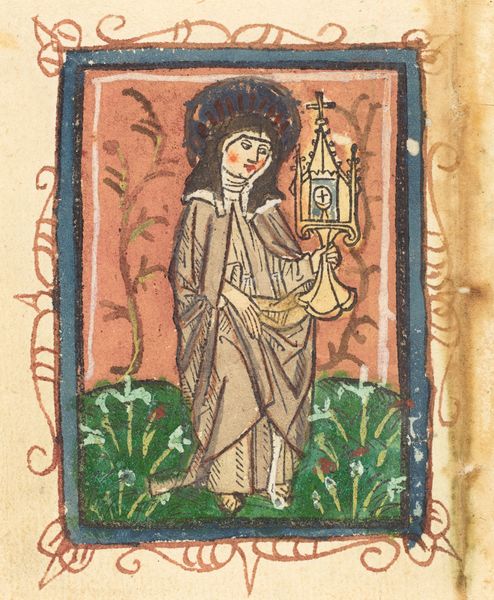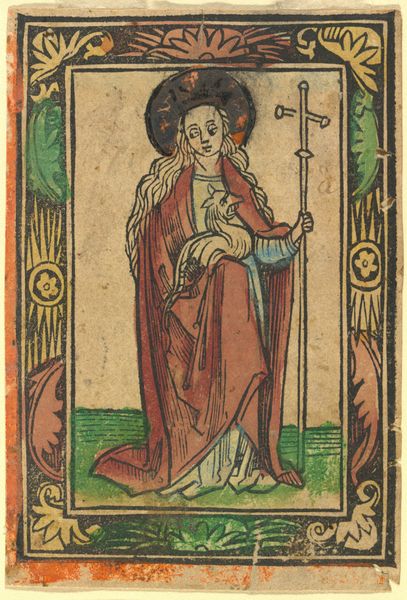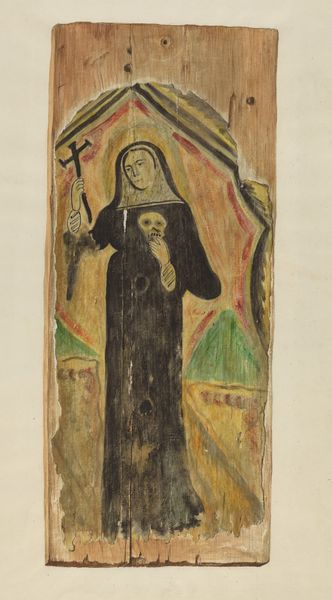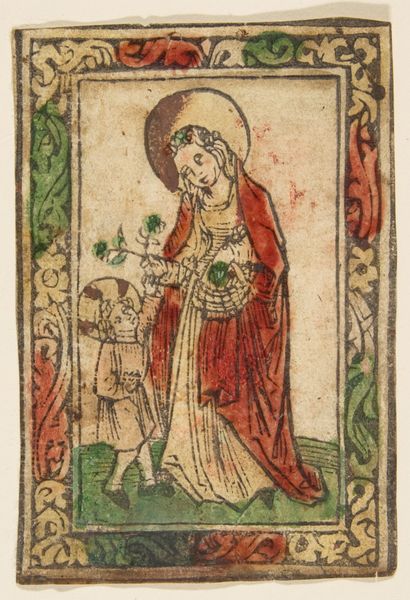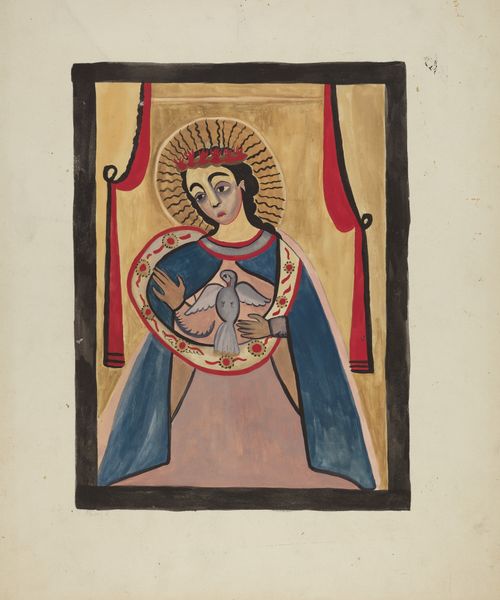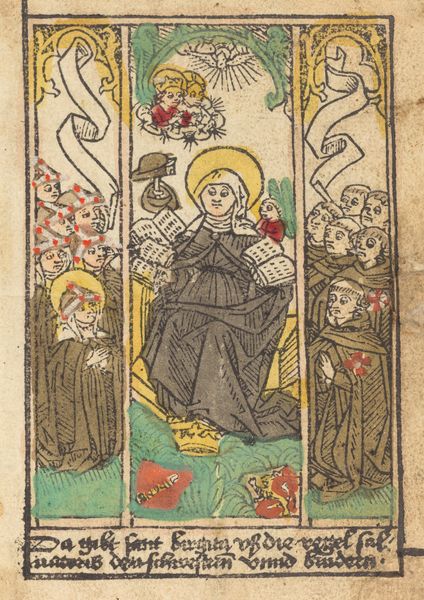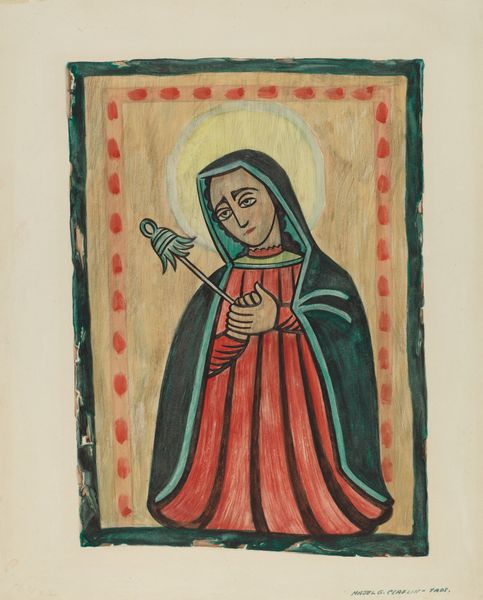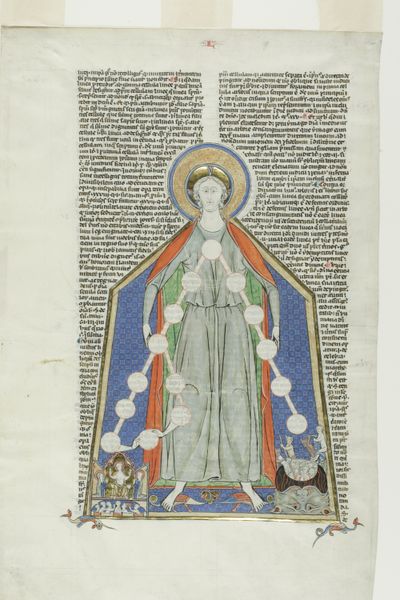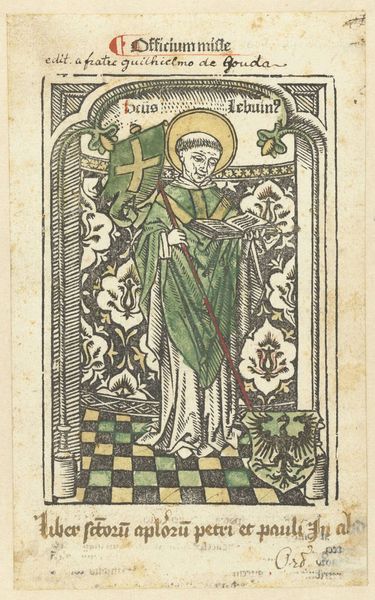
painting
#
portrait
#
painting
#
figuration
#
mural art
#
watercolour illustration
#
portrait art
Dimensions: overall: 26.7 x 30.5 cm (10 1/2 x 12 in.)
Copyright: National Gallery of Art: CC0 1.0
Editor: This is “Retablo - St. Procopio,” a watercolor painting made sometime between 1935 and 1942 by Majel G. Claflin. I’m struck by its unique, almost folk-art-like style, yet it depicts a religious figure with clear symbolism. What’s your take on this piece? Curator: I find this piece fascinating precisely because of its intersection of folk art sensibilities and religious iconography. Retablos, traditionally, are votive paintings on tin, often depicting saints or biblical scenes. Given that Claflin was a painter during a time of significant mural production, notably during the Public Works of Art Project, it is hard not to place it in that larger art context of accessible art. How does the image's presentation strike you? Does it seem intended for a private devotional space or something more public? Editor: That’s a great point! Given its modest size and the watercolor medium, it does feel more personal, more like something made for a home rather than a church, or public display. Curator: Exactly. Considering that this work likely coincided with the rise of socially conscious art, particularly focusing on regional and ethnic identities, one wonders if Claflin consciously aimed to democratize religious art by making it more intimate and accessible. The portrayal also seems deliberately humble. What social message can this intimate representation provide? Editor: So it’s less about grand religious spectacle and more about personal faith, maybe? By situating St. Procopio in this folksy context, is Claflin almost saying that holiness exists in everyday life? Curator: Precisely. This brings attention to a fascinating interaction between formal artistic styles and public piety. By transforming standard Catholic subject matter into something uniquely accessible, we may consider questions of cultural adaptation, class, and individual interpretations. This isn't simply a devotional image, but an exploration of faith in the everyday American context. Editor: I see, so by understanding the time and place in which Claflin was working, and the function the artwork served, it really allows one to connect art to broader societal forces. Curator: Absolutely. Art does not exist in a bubble. When we discuss these elements we move closer to the artist’s intentions in relation to a world in constant flux.
Comments
No comments
Be the first to comment and join the conversation on the ultimate creative platform.
